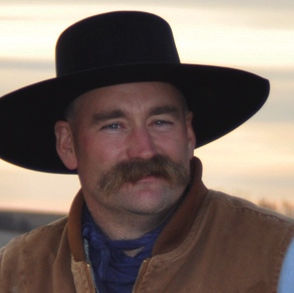Pushing the right buttons
We have a “reset button” opportunity in the food business right now so let me make a prediction: Unless we, the farmers and ranchers, get really busy and push to set the tone for the reset, nothing will change for the better.
It is no secret that as the United States grew in the past 200 years the real essentials of life became taken for granted. Unless we drive the ship on the other side of COVID-19, the disconnect will only widen. Folks will get really tired of “working” to get their food and convenience will be even more important than it was yesterday.
I have been reading up on the history of the meatpacking business. Mostly because I do think it is important for us to learn the steps, and missteps, of the past as to how we shape the future. It is very clear to me that government intervention will not, in any way, shape or form, lead to a solution but only cause greater problems. Let’s be straight up: Survival will be about how much of the consumer’s food dollar you can get. If we continue at the 17% level, the farm exodus will only continue.
The history of meatpacking in the U.S. is very interesting to me. Quite frankly, what happened in the early years of growth is not one bit different than what we see happening today. From an animal standpoint, it was the hog that drove all things until the Civil War. So much of our financial structure still has the hog as the driver of cause. Wall Street was actually built to keep the roaming hogs from the city of Manhattan and Fort Amsterdam. The term “pork barrel,” which is primarily used in government terms today, came directly from the pork trade of the early 1800s.
As early as 1830, Cincinnati was known as Porkopolis because not only were hogs roaming the streets but it was the pork powerhouse in hog slaughter. In fact, the early data on what was accomplished is quite amazing to me.
In one Cincinnati slaughterhouse as early as 1845, five men cut up, weighed and trimmed 850 hogs, weighing on average 300 pounds per head, at the rate of one per minute. By 1867, it was said that the same five men could do all of that and have the pork salted in the barrel in 20 seconds each. Interestingly enough, by 1850, the fat, hoof, heart and hair of a hog was worth 20 cents and was considered the real gravy train of profit in those days.
In 1852, Illinois actually took the leadership in hog processing away from Ohio as the state harvested 325,000 head in Chicago, Peoria, Beardstown and Alton alone. I think we are all somewhat familiar with the cattle drive era that grew exponentially thanks to the development of railroads during the post Civil War era. However, it was the state of Illinois that really created that opportunity prior to the Civil War. In 1850, there were 131 miles of railways, 10 years later that had grown to 5,474 miles. By 1870, it was 15,105 miles and finally it was up to 33,344 miles in 1880.
It was the Civil War and the destruction of food resources in the east that led to the growth of beef cattle production. First, 6 million head of Texas cattle were trailed to the railroad in Abilene, Kansas, and hauled into Illinois to ultimately be harvested in Chicago. The meat was then railed into the east to reconnect our torn nation.
Through this entire time period, there is one common sentiment in the journals of meatpacking history that folks need to hear today. Even as Illinois grew and even as New York City had, at one time, 210 different places harvesting animals, the common problem was, are you ready for it?
The big 3 packers, Swift, Wilson and Armour had too much control. They were bullying the little packers and not paying the farmer properly. All of that led to the 1906 Meat Inspection Act. I might add this was really a blatant attempt to remedy what the 1902 Sherman Anti-Trust Act did not accomplish which was the breaking up of monopolies in the meatpacking business. According to Brittanica at www.britannica.com/topic/Meat-Inspection-Act:
“U.S. legislation, signed by Pres. Theodore Roosevelt on June 30, 1906, that prohibited the sale of adulterated or misbranded livestock and derived products as food and ensured that livestock were slaughtered and processed under sanitary conditions.”
I am not making a case that monopolies are just going to be here no matter what, but if one looks at the real history of where we have been, it is clear that government intervention leads to the destruction of the small and mid-sized producer and larger economies of scale operations are able to truly excel in a such an over-regulated environment.
So while we do have a reset button in front of us today, who is really going to help make sure we push the right buttons and ensure that American consumers and our global customers continue to have the safest, highest-quality protein supply in the world?
Editor’s note: Trent Loos is a sixth generation United States farmer, host of the daily radio show, Loos Tales, and founder of Faces of Agriculture, a non-profit organization putting the human element back into the production of food. Get more information at www.LoosTales.com, or email Trent at [email protected].
